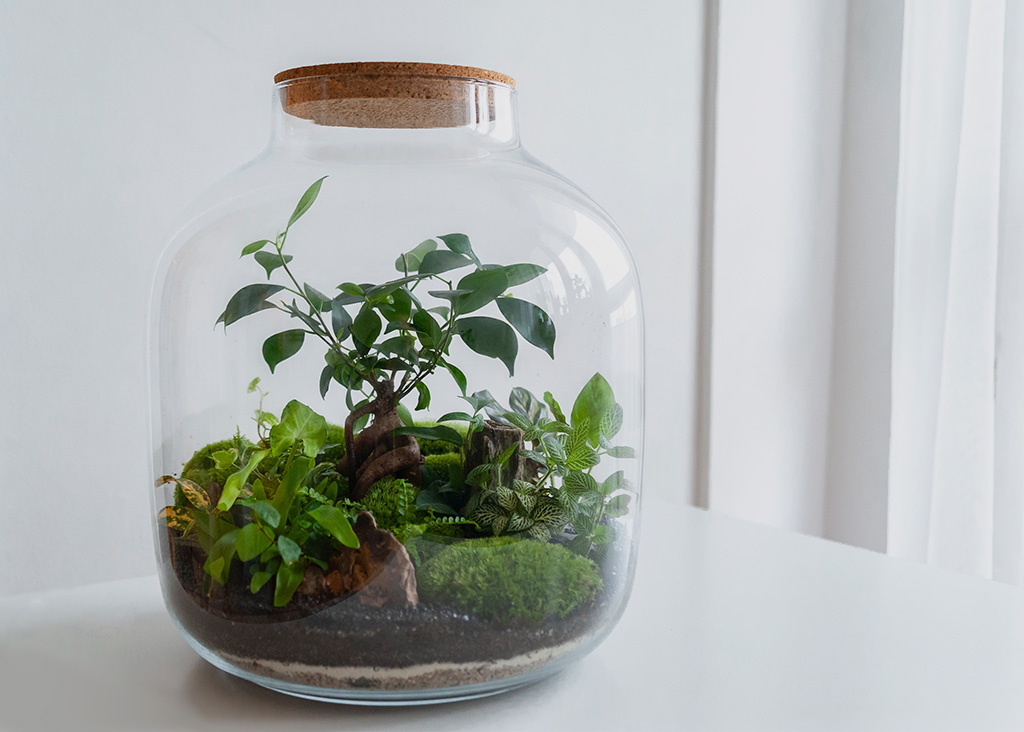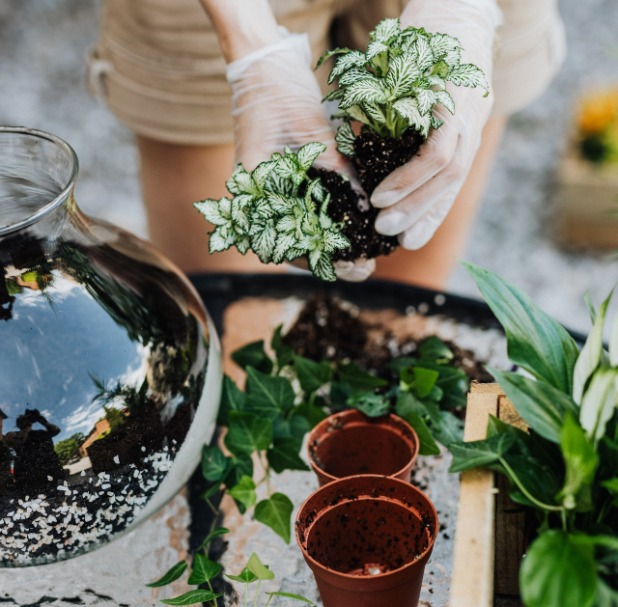
Deliver to
Europe
 English
English

No green thumb? No problem! We are ready to explain to you how to create your own closed plant terrarium that you can enjoy for a long time. So, do you feel like bringing out your inner gardener? Let's get started making your own self-sustaining mini ecosystem!
Whether you are an experienced plant lover or a beginner, it's essential to take the choosing of the right terrarium supplies seriously. A good start is half the battle.
Not every plant can survive well in a constantly humid environment, but the following plants will thrive in a terrarium.
If you're someone who likes to visualise the process, watching a video can be quite enjoyable. In this short video, you can see the basics of how to make your own terrarium.
Making a terrarium is easy, especially if you follow our step-by-step plan. In general, this step-by-step plan is suitable for any type of closed plant terrarium. Nevertheless, your terrarium may need a slightly different approach. This could be due to a unique shape of glass, the size of the terrarium or because you choose to use different supplies. But the basics of making a terrarium remain the same!
First, clean the glass thoroughly. This ensures that no bacteria, dust or smudges remain in the glass. If there are bacteria in the glass, they can affect the health of the terrarium.
You can use a mix of ecological soap and water for cleaning, for example. Make sure you have dried the glass well before you continue making the terrarium.
We recommend starting with a moisture-absorbing layer of about 2 to 4 cm. You can choose from gravel, small stones, pebbles, clay pebbles or a combination of these. More than 4 cm is also possible if you personally like this more, but keep in mind that the glass needs to be tall enough for this. After all, the other supplies have to fit in as well! This first layer with gravel, small stones, pebbles or clay pebbles is mainly meant to absorb excessive moisture. This ensures a healthy balance in the closed terrarium.
This step is optional, but for a healthy closed terrarium, we recommend using activated charcoal. A layer of activated charcoal reduces the chances of excessive mould growth because it has a filtering function. You can spread a thin layer of activated charcoal as a second layer, on top of the pebbles.
The next step is to add a layer of potting soil. You can choose from different types of potting soil for indoor plants, depending on your own preference. Make sure the layer of potting soil is sufficiently deep for the plants so that they have enough soil to root.
If you want to add moss in the terrarium, you can place it on top of the layer of potting soil. The moss is best placed at the edges of the glass, leaving enough space in the middle for the plants.
Now take the plants out of the nursery pots. If a plant's root ball feels dry, you can first moisten the roots with a plant mister beforehand. Next, plant the plants in the middle of the terrarium.
If you still have space left in the terrarium, you can add your own decoration, such as decorative stones.
Finally, you can close the terrarium glass with a lid or cork. If you use a cork, place it gently on the glass without pressing it too hard. This ensures the cork remains undamaged and can be easily taken out. It’s okay if your terrarium isn’t 100% airtight.
Have fun with your closed plant terrarium!


A closed plant terrarium is easy to care for and maintain. Nevertheless, it's important to, for instance, choose the right location and keep an eye on the moisture balance of your terrarium.
Read all the information and tips on this page: Care and maintenance of a closed plant terrarium
Are you in doubt whether you have the right plants and supplies? Or would you rather go for convenience? Don't worry! At Studioplant, we offer carefully crafted DIY kits. These kits contain all the necessary supplies and the best plants for a closed terrarium. This ensures ultimate convenience! You can choose from several DIY kits with glass and cork, or refill kits without glass.